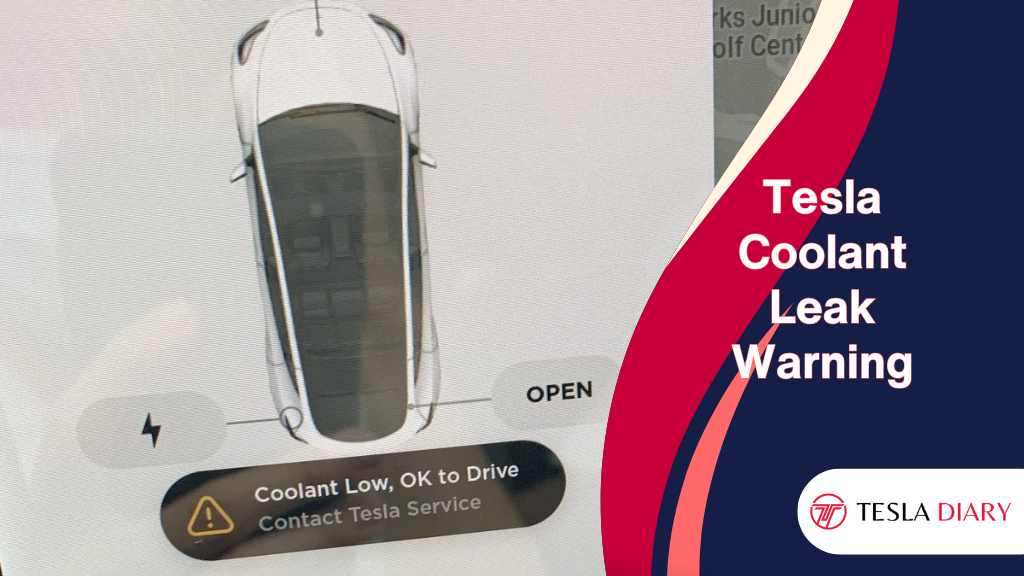The Tesla coolant low warning can be alarming, but it’s essential to understand its causes to address it effectively.
In this article, we will discuss what the Tesla Coolant Low warning means and provide a step-by-step guide on how to solve this issue.

Understanding the Coolant System in Tesla
Before delving into the solution, it’s crucial to understand the role of coolant in Tesla vehicles. Teslas, like traditional combustion engine cars, use a coolant system to regulate the temperature of the battery pack and electric motor. This system prevents overheating, ensuring optimal performance and battery longevity.
The Coolant Low Warning
The “Coolant Low” warning is designed to alert Tesla owners when there is a potential issue with the coolant level.
This warning may appear on your dashboard display with a message like-
- Coolant Low, Ok to Drive.
- Coolant Low – Ok to Drive – Schedule Service. Powertrain / HVAC performance may be limited.
- Vehicle Coolant is Low.
Seeing this warning may lead to concerns about overheating and potential damage to the vehicle.
Possible Causes
Several factors can contribute to the “Coolant Low” warning:
- Coolant Leak: The most common reason for low coolant levels is a coolant leak. This can occur due to a damaged hose, a loose connection, or even a small puncture in the coolant reservoir.
- Air Bubbles: Sometimes, air bubbles can get trapped in the coolant system, causing the warning to appear. These bubbles may obstruct the proper circulation of coolant.
- Temperature Fluctuations: Extreme temperature fluctuations can lead to the expansion and contraction of the coolant, causing fluctuations in the coolant level. This can trigger a warning.
Steps to Solve the Coolant Low Warning
If you encounter the “Coolant Low” warning in your Tesla, follow these steps to address the issue:
1. Park Safely
First and foremost, ensure your safety by parking your Tesla in a safe location and turning off the vehicle.
2. Check for Leak
Check if there is any fluid trail or drip underneath the vehicle. If it is, you need to go to the service center to fix this. Do not try DIY repair in case of a battery coolant leak.
3. Rule Out Sensor Glitch and Temperature
Sometimes, sensor glitches can cause the warning to appear. If there is no leak, try resetting the system by following this-
- Park the car.
- Press and hold both scroll wheel buttons on the steering wheel until the touchscreen goes black.
- Release the buttons when the screen turns back on with the Tesla logo.
- Wait for the system to boot up completely.
Now, check if the warning is still there.
Also, if you live in an area where the temperature is too cold, the coolant might contract causing the sensor to trigger the low coolant warning. If that’s the case, the warning should go away after a couple of minutes of driving.
Still, I would recommend having the car checked by Tesla service technicians in case there is any other underlying issue.
Conclusion
The “Coolant Low” warning in Tesla vehicles is a valuable alert system designed to maintain the health and performance of your electric vehicle.
While it can be concerning, it is often a manageable issue caused by factors like leaks or air bubbles.
By following the steps outlined in this article, you can address the warning and keep your Tesla running smoothly.
However, if the problem persists, it’s essential to seek professional assistance to ensure the long-term reliability of your vehicle.

